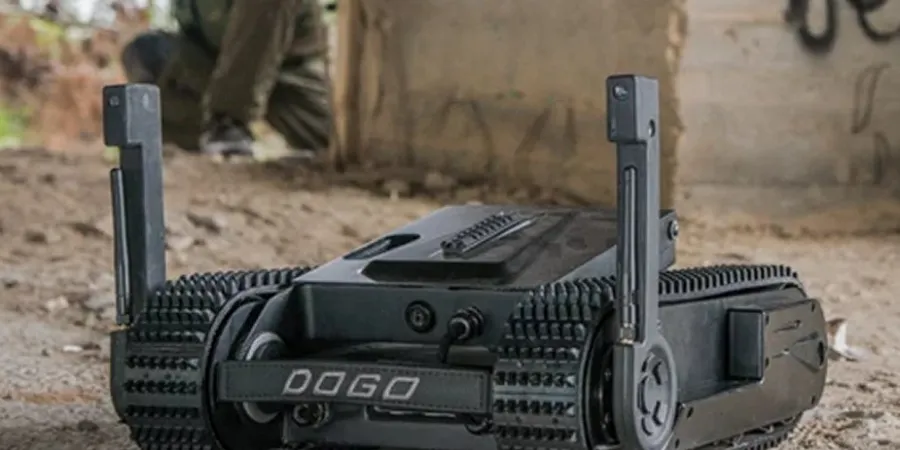General Robotics Introduces Less-Lethal Weapon Module for its DOGO Robot
The less-lethal module was designed to allow intervention forces to remotely neutralize threats while reducing the risk of inadvertent lethal injuries to a target or bystanders
IsraelDefense
| 13/11/2017
General Robotics launches a Less-Lethal Weapon (LLW) module attached to the DOGO robot for special units and police forces. The less-lethal module was designed to allow intervention forces to remotely neutralize threats while reducing the risk of inadvertent lethal injuries to a target or bystanders.
According to the company, the DOGO LLW module enables Special Forces full discretion regarding the level of lethality needed in different scenarios, as activating an accurate-lethal or less-lethal weapon can be done in a push of a button.
From an operational standpoint, the use of less-lethal weapon allows the neutralization of an attacker with minimum collateral damage, making sure the perpetrator will be fit for interrogation afterward.
The DOGO is a remotely controlled, 10-kg ultra-light hand-held anti-terror robot. It is used for a variety of missions, including counter-terror, hostage rescue, close-quarter combat, fatal funnel clearance, urban warfare, subterranean warfare, ISR, and target detection.
The DOGO LLW includes a Remote Controlled Pepper Spray Module. It features an effective range of approximately 18 feet, an invisible ultraviolet light sensitive dye for suspect identification, and a powerful NIR front projector. The robot includes a Remote Controlled Dazing Light Module that features stun light and tactical light. It also induces aversion responses from approaching persons and has an effective range of 5m in the daytime, and 10m at nighttime.
[Source: Army Recognition]
The less-lethal module was designed to allow intervention forces to remotely neutralize threats while reducing the risk of inadvertent lethal injuries to a target or bystanders
General Robotics launches a Less-Lethal Weapon (LLW) module attached to the DOGO robot for special units and police forces. The less-lethal module was designed to allow intervention forces to remotely neutralize threats while reducing the risk of inadvertent lethal injuries to a target or bystanders.
According to the company, the DOGO LLW module enables Special Forces full discretion regarding the level of lethality needed in different scenarios, as activating an accurate-lethal or less-lethal weapon can be done in a push of a button.
From an operational standpoint, the use of less-lethal weapon allows the neutralization of an attacker with minimum collateral damage, making sure the perpetrator will be fit for interrogation afterward.
The DOGO is a remotely controlled, 10-kg ultra-light hand-held anti-terror robot. It is used for a variety of missions, including counter-terror, hostage rescue, close-quarter combat, fatal funnel clearance, urban warfare, subterranean warfare, ISR, and target detection.
The DOGO LLW includes a Remote Controlled Pepper Spray Module. It features an effective range of approximately 18 feet, an invisible ultraviolet light sensitive dye for suspect identification, and a powerful NIR front projector. The robot includes a Remote Controlled Dazing Light Module that features stun light and tactical light. It also induces aversion responses from approaching persons and has an effective range of 5m in the daytime, and 10m at nighttime.
[Source: Army Recognition]



